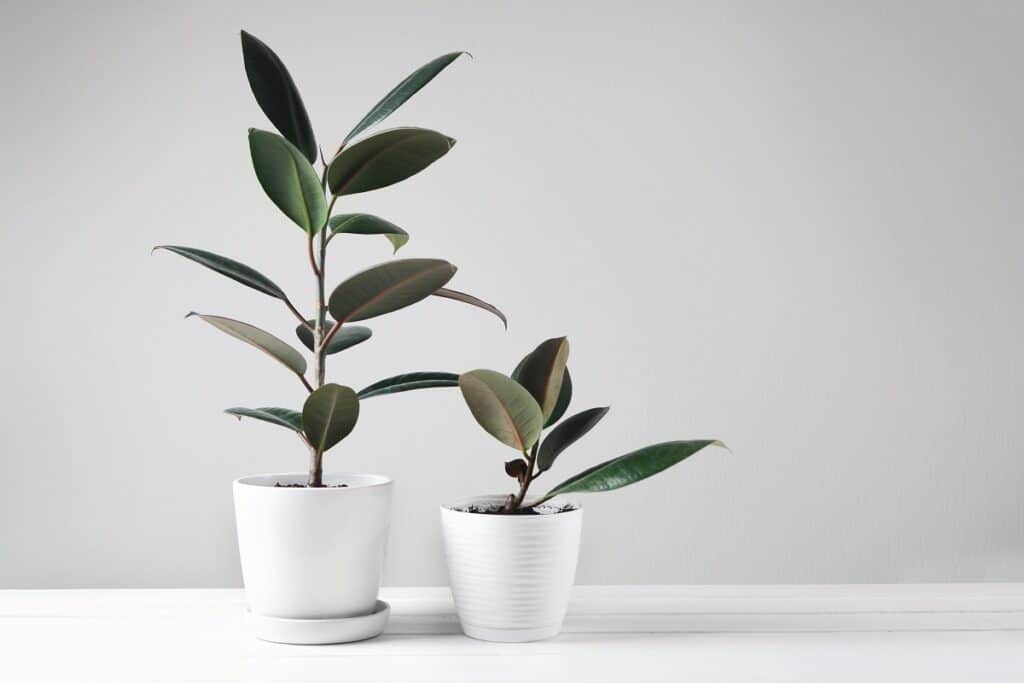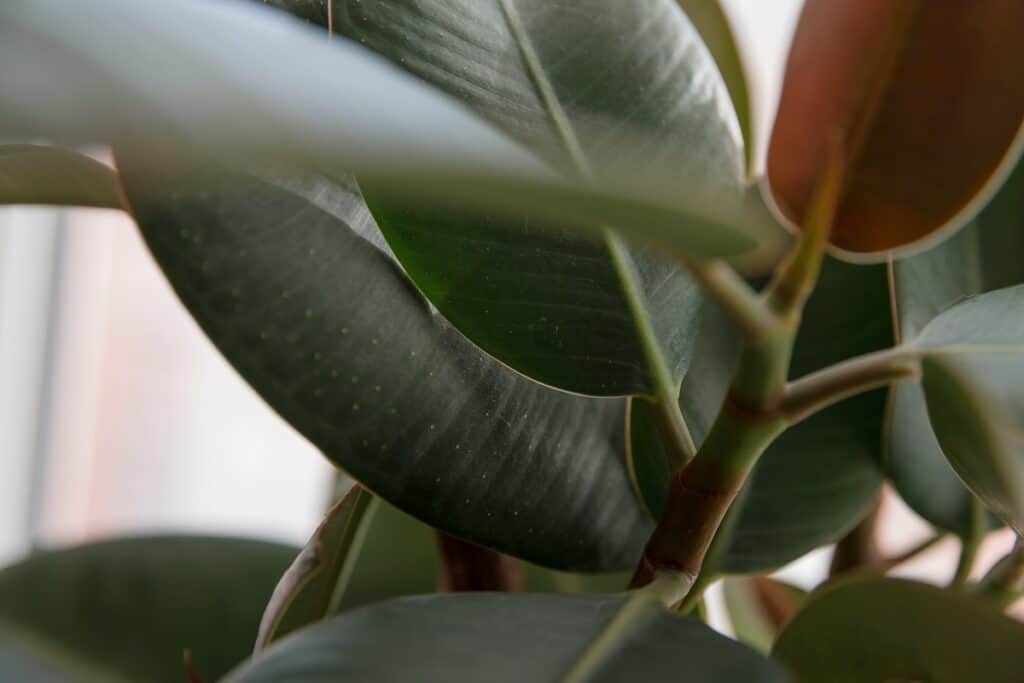With their stunning and elegant foliage, rubber plants have become a popular choice for indoor and outdoor decoration. But beyond their beauty, these plants have many amazing benefits. From air purification to reducing stress, rubber plants can provide an array of health benefits to both your home and yourself. In this article, we will explore 17 amazing rubber plant benefits that you can enjoy in your own home.
As the number of people living in urban areas continues to rise, it’s important to find ways to improve health and wellness in our homes. Rubber plants are a great way to do just that. By adding this plant to your home, you can enjoy multiple health benefits. For starters, rubber plants are one of the few plants that can improve air quality. According to the NASA Clean Air Study, rubber plants were found to efficiently remove harmful toxins such as formaldehyde, benzene, and trichloroethylene from the air. In addition, rubber plants can reduce stress, provide a calming atmosphere, and even help to boost your mood.

Contents
- 1 17 Amazing Rubber Plant Benefits
- 1.1 1. Improves Air Quality
- 1.2 2. Low Maintenance
- 1.3 3. Versatility In Home Decor
- 1.4 4. Disease Resistance
- 1.5 5. Increases Humidity
- 1.6 6. Easy to Propagate
- 1.7 7. Easy to Care For
- 1.8 8. Attractive Appearance
- 1.9 9. Long-Lived
- 1.10 10. Increases Positive Energy
- 1.11 11. Low Light Tolerance
- 1.12 12. Reduces Stress
- 1.13 13. Can Grow to Large Sizes
- 1.14 14. Can Adapt to Many Soil Types
- 1.15 15. Inexpensive
- 1.16 16. Improves Concentration
- 1.17 17. Reduce Noise Pollution
17 Amazing Rubber Plant Benefits
1. Improves Air Quality
Rubber plants are excellent at removing toxins from the air. This includes formaldehyde, benzene, and trichloroethylene, which are all common pollutants found in the air indoors. They can also help reduce levels of dust, pollen, and smoke in the air.
The large, glossy leaves of the rubber plant act as a natural filter, trapping harmful pollutants and releasing clean oxygen back into the room. This makes them a great choice for anyone looking to improve their indoor air quality.
2. Low Maintenance
Rubber plants might be some of the easiest houseplants to care for. They are very low maintenance and require minimal attention.
Because the rubber plant is native to tropical areas of Southeast Asia, it is accustomed to warm, humid climates. In the home, it does best in temperatures between 60 and 75 degrees Fahrenheit and prefers bright, indirect light. Watering should be done only when the top inch of soil has dried out.
Rubber plants are also very tolerant of neglect. If you forget to water them, they can handle a few weeks of drought before they start to show signs of wilting or yellowing leaves. In addition, they don’t need frequent pruning and really only need to be pruned to maintain their desired shape.

3. Versatility In Home Decor
Rubber plants are incredibly versatile when it comes to home decor. They are a great way to bring a touch of nature into your home and can enhance any style of interior.
For a modern look, rubber plants can be placed in sleek, minimalist containers and placed in the corner of a room or on a mantelpiece. This can add a vivid green hue to the room and will bring the outdoors in. For a more traditional look, a rubber plant can be placed in a larger, ornate pot and placed in a prominent spot, such as on a hallway table or in the living room. The lush leaves of this plant are sure to bring a touch of vibrancy to any room.
4. Disease Resistance
Rubber plants are known for their resilience, and their resistance to disease is one of their most impressive benefits. This resistance is largely due to the plant’s natural, waxy coating that acts as a barrier against fungal and viral infections. As a result, rubber plants are able to fend off many of the same diseases that other plants are prone to. This makes them especially attractive to gardeners and homeowners looking for a hardy, low-maintenance houseplant.
5. Increases Humidity
Rubber plants can help to increase the humidity levels in a room, which can be beneficial for people with dry skin or allergies.
6. Easy to Propagate
Propagating a rubber plant is quite a straightforward process and is quite simple for those with a green thumb. The plant can be propagated either through stem cuttings or through the division of a mature plant.
When propagating through stem cuttings, the stem cutting should be taken from an existing plant and placed into water or moist soil. The cutting should have at least two sets of leaves and should be cut just below a node (a node is where a leaf attaches to the stem). The cutting can then be placed in water or moist soil and will eventually produce roots.

When propagating through division, the parent plant should be carefully removed from its pot and the root ball should be examined. The parent plant can then be divided into two or more parts with a sharp knife and the portions should be replanted into individual pots.
Related Post:
How To Fix Leggy Rubber Plants
7. Easy to Care For
Rubber plants are very easy to care for, requiring minimal attention once established.
8. Attractive Appearance
Rubber plants have an attractive appearance, with glossy, waxy leaves and interesting shapes and sizes.
9. Long-Lived
Rubber plants can live for many years, with some plants living for up to 20 years.
10. Increases Positive Energy
Rubber plants are associated with positive energy and can help to create a calming and peaceful atmosphere.
11. Low Light Tolerance
Rubber plants can tolerate low light levels, making them a great choice for dark rooms or offices.

12. Reduces Stress
As a natural stress reliever, the rubber plant is an invaluable resource for people who struggle with anxiety. Studies have shown that having plants in the office or in the home can reduce stress levels significantly. The air-purifying properties of the rubber plant mean that it is capable of reducing airborne toxins, which can be a major cause of stress and anxiety.
The rubber plant also has a calming effect on people. Its large, round leaves are soothing to look at and its bright green color is said to be calming. It is a great way to add a splash of color to any room while also having a calming effect on its inhabitants.
The rubber plant’s calming and stress-relieving properties make it an ideal addition to any home or office. Its air-purifying abilities and soothing aesthetic make it a great choice for anyone looking for a way to reduce stress and anxiety in their environment. Whether used in the home or in the workplace, the rubber plant can make a huge difference in reducing stress levels.
13. Can Grow to Large Sizes
Rubber plants can grow to large sizes, making them a great choice for those who want to fill up space in their home or office.
14. Can Adapt to Many Soil Types
Rubber plants can adapt to many types of soil, making them a great choice for those who don’t have a green thumb.
15. Inexpensive
Rubber plants are very inexpensive, making them accessible to those on a budget.
16. Improves Concentration
Improved concentration is one of the many benefits of having a rubber plant in your home or office. Studies have shown that having plants around can help people focus better and improve their concentration levels. This is because plants help to reduce stress and increase oxygen levels in the air, both of which can help to improve cognitive functioning.
A study conducted by the University of Washington found that students who studied in a room with plants had better cognitive functioning than those who studied in a room without plants. Not only did the students with plants perform better on tests, but they also felt more relaxed and had lower levels of stress.
Another study conducted by the University of Agricultural Sciences in India found that students exposed to plants in their study environment had improved concentration levels when compared to those who studied in a room without plants. The researchers concluded that having plants in the study environment could be beneficial for students, as it can help to reduce stress and improve cognitive functioning.
17. Reduce Noise Pollution
Rubber plants are effective at reducing noise pollution because of their ability to absorb sound waves. The leaves and stems of the rubber plant can trap sound waves and prevent them from bouncing off walls and other surfaces. This helps reduce the amount of noise that is heard in the area. Additionally, rubber plants can help to block the sound coming in from outside, like the sound of traffic or people talking. This can help to make an environment quieter and more peaceful.
